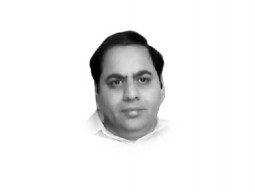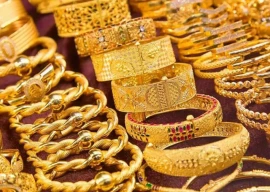
With a view to regulate the domestic market, sugar industry in Pakistan is intervened by the government through regulations on prices, subsidies, export quotas, and imports. The industry is the second largest agro-based industry in Pakistan, after textiles. As the seventh largest producer of sugar and fifth largest producer of sugarcane, Pakistan has the potential to be a player in the global market for sugarcane and sugar. However, there are structural inefficiencies in regulating this industry which needs to be resolved in order to have an impact in the global market. Even though the government is fully involved in the industry, such involvement could not achieve its desired objectives of fairer prices and establishing a competitive and export-oriented sugar industry.
The pricing of sugarcane is a provincial subject and, accordingly, provincial governments set the procurement price of sugarcane from growers to mills. Prices are normally fixed above global market prices but below the domestic prices. At some point in time, this was intended to be the price at which the mills would buy sugarcane from the growers, but over the years it became a “floor” or minimum price. This instrument is ineffective as the growers are usually exploited by the middlemen and millowners. Majority of the growers are credit-constrained, with small land holdings. In order to apply right and timely inputs, they are exploited by the middlemen and other funding agencies who provide them capital on either heavy markup or other harsh conditions. Moreover, due to the presence of the black market, sugar mills force the farmers to sell their products at a much cheaper rate. Alternatively, most of the small growers sell their products to middlemen or big growers at prices well below the assigned rate of the government. Moreover, payments from millowners are usually delayed which trap small growers in a vicious circle of debt. Thus, on the growers’ side, low economic returns, the disposal problem of sugarcane, and payment difficulties are discouraging factors.
Sugar pricing is usually based on market dynamics which are broadly dependent on international prices. However, the federal government can manipulate prices either through direct regulations on exports/imports or through duties on imports or subsidies on exports. For instance, the government allows imports when there is a shortage and imposes import tariffs and authorises exports, when there is excess supply. However, the government at times cannot predict the exact stock of sugar in the country as most sugar mills have large godowns and can hoard supplies. The law says that godowns that stock essential commodities should be registered, but no such data is available with the government. Moreover, with regard to exports and imports, the time delay between request-approval, distribution of quotas among the producers, and phased approval without any understanding of international outlook are the major hurdles in ensuring adequate supply in the domestic market. Consequently, we observe frequent sugar crises, hoarding and overpricing in the domestic market.
The sugar industry is subsidised in a variety of ways. Subsidised fertiliser, canal irrigation, electricity and credit are some of the bounties to the sugar industry. For instance, sugarcane cultivation is highly water-intensive, the underpricing of canal irrigation water is by far the largest indirect subsidy. Likewise, the government controls the domestic availability of sugar and sets export quotas for export of any surplus. Alternatively, after meeting the domestic demand, the industry exports the remaining sugar produced; however, the decision to export is taken by the government. In times of excess supply, the government provides export subsidies to encourage export. During the last fiscal year, the government allowed an export quota of two million tons of sugar, with a subsidy of Rs10.7 per kilo. This subsidy was further supplemented by an additional Rs9.3 per kg support by the Sindh government, but with an upper cap of 20,000 tons per sugar mill (Sindh only). According to the recent inquiry report of the committee constituted by the Prime Minister for increase in sugar prices, the main beneficiaries of this offer were three influential political groups — RYK, JWD and OMNI groups. The RYK group, having four sugar mills, is owned and controlled by Mr Makhdoom Umar Shehryar (relative of Mr Makhdoom Khusro Bakhtiyar). The JDW group, with six sugar mills, is owned and controlled by Mr Jehangir Khan Tareen. The OMNI group is owned by Anwar Majeed, with beneficiary ownership resting with the Zardari family. Overall, from 2015 to 2018, the sugar industry has expropriated around Rs25 billion in export subsidy. Significant elite capture can be observed in the expropriation of this subsidy. Among the main beneficiaries are RYK, JDW, Hunza sugar mills, Fatima sugar mills, sugar mills owned by the Sharif family, al Moiz group and OMNI group. For instance, RYK and JDW have expropriated 15.83% and 12.28% of this subsidy, respectively. Likewise, the Hunza and Fatima sugar mills have taken 11.56% and 9.27%, respectively. Collectively, the most powerful six groups have seized more than 60% of these subsidies.
Furthermore, Pakistan’s sugar industry is characterised by political capture. For instance, the most powerful six groups control 51% of sugar production in Pakistan. It is easy for these groups to coordinate and act as a cartel and manipulate the market. The control of so few, mostly with a political background, shows the strong influence they can exercise on policy and administration. Alternatively, these powerful interest groups can control the regulations to their benefits at the cost of the market and consumers.
The solution to these issues lies in deregulation, removing subsidies, and ensuring competition in the market. In other words, when the regulations fail to achieve its desired objectives of fairer prices and competition, it is optimal to relax such regulations. For instance, competitive pricing in the sugarcane market would enable the growers to work out their alternative choices. Likewise, competitive sugar pricing or relaxing restrictions on the imports and exports of sugar would incentivise the sugar producers to enhance their productive, technical and allocative efficiencies. The savings from removal of the export subsidies, in this regard, would enable the government to focus on the growers instead of the millowners. Finally, free trade in sugar would make consumers better off by discouraging hoarding and over-pricing in the domestic market. These measures, if taken, would definitely impact the development of the competitive sugar industry in Pakistan.
Published in The Express Tribune, April 21st, 2020.
Like Opinion & Editorial on Facebook, follow @ETOpEd on Twitter to receive all updates on all our daily pieces.



















COMMENTS
Comments are moderated and generally will be posted if they are on-topic and not abusive.
For more information, please see our Comments FAQ